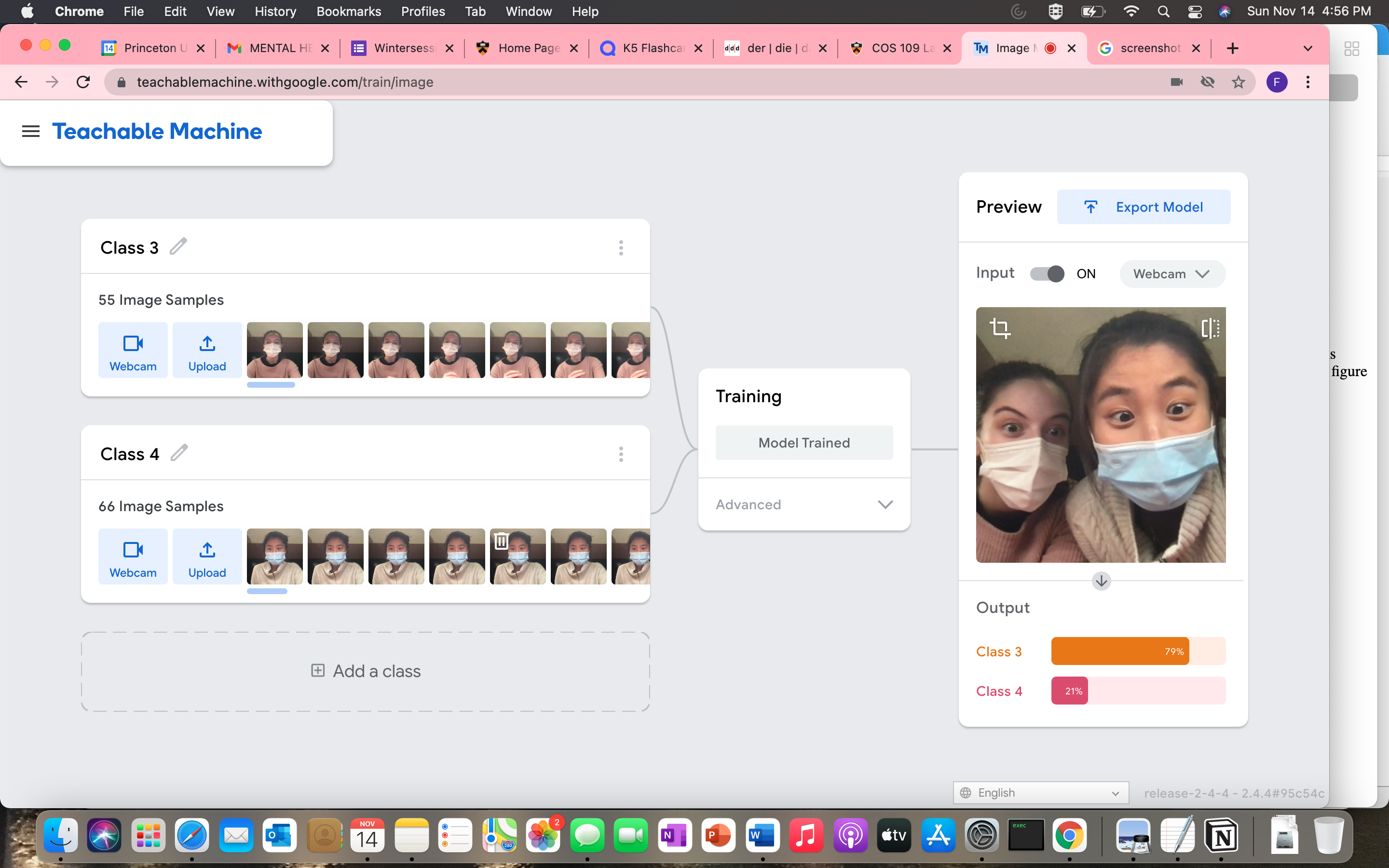This Ngram is America and USA, case sensitive, in English fiction between the years of 1800 and 2012. America is consistently used much more than USA, which I expected. USA has seen a slight increase in usage starting in the sixties, yet it begins to taper off again at the end of the timeline. The use of the word America peaks around wars, with peaks notably around the 1860s and the 1940s. This is in English fiction as well, not American fiction, reflecting America's global presence. I thought it would be more interesting to see our presence within English fiction than within American fiction.
In this Ngram I compared, case-insensitive, Marie Antoinette and Anne Boleyn's occurrence in English Fiction from 1800 to 2019. I wanted to see which figure would be more popular, and when. Marie Antoinette is consistently more popular post 1860, but before then, Anne Boleyn experienced higher rates of occurrence, with a particular peak in the 1840s. I also find this fascinating given that Marie Antoinette isn't an English figure and Anne Boleyn is, yet Marie Antoinette is steadily more popular.
I used Louisa May Alcott's Little Women via Project Gutenberg to make this cirrus. I like the cirrus view because it is simple and easy to process what is happening just by looking at it, but I also found the dreamscapes view particularly fun. Through the cirrus, it's very easy to see that Jo is the main character, but Meg, Laurie, Amy, and Beth are pretty important too. Something I particularly love, given the nature of the novel Little Women, is how small Mrs. is. Knowing the book and who Louisa May Alcott is makes me take pleasure in the married woman honorific's relative insignificance. The StreamGraph is also kind of funky looking, plotting relative frequencies of the most frequently used words against document segments. In this visualization, It's a little bit harder to tell which word is used the most frequently.
Acquitted is assigned a positive value, but if it's used in the context where someone who is guilty is acquitted, then I'd say that's pretty negative. Fit is also assigned a positive value, but I think that word is pretty dependent on context. One could say "it's a bad fit" or something.
Futile for some reason is +2? I think that's very odd, and futile is certainly negative. Hurrah is 5, which I think is very high. I would give that maybe a 2.
"I really like being here" was definitely positive with both, and I would agree that is correct. "He was brooding in the corner." is also agreed upon, solidly negative with both analyzers.
"You're a dear, and nothing else," answered Meg warmly, and no one contradicted her, for the 'Mouse' was the pet of the family." This was given a score of 1 by Sentimood, and a 92% confidence negative rating on the commercial analyzer, so one thinks it's positive and the other does not. It's the same with "I don't like this feeling", which Sentimood scores at 3 and commercial finds negative.
"But maybe this thing was a masterpiece 'til you tore it all up." is positive on both Sentimood and the commercial analyzer, but this is arguably one of the more heartbreaking lyrics in All Too Well. Same with "He's gonna say it's love, you never called it what it was.", another very sad lyric scored as positive on both analyzers.
"Christmas won't be christmas without any presents." translated into french and back gives "Christmas will not be Christmas without gifts.", which I'd say is pretty good. "Please take five minutes to fill out the following survey below for a psych class!", input from an email, translated to french and back gives exactly the same sentence back except psych has become psychology. These worked on both bing translate and google translate.
The services worked pretty well with French and English, so I would say it could be useful. I think it's smart not to rely on translation services just because there is so much nuance a computer can't yet capture, as can be seen in the sentiment exercise, but it's helpful for short phrases. I don't see meaningful differences between different services, but I think google picks up on more colloquialisms in language and could have a broader base of knowledge to make smarter decisions.
For my first experiment, I did one example of just my face, and the other of the back of my phone. When I was looking at the model, it had done a pretty good job of being able to distinguish which was which, but showing the front of my phone really confused the machine. I also took my sample with my mask on, and when I took it down it still recognized me. The second one I did me and my friend Erin, which I think the computer had a bit more trouble with. It could still tell the difference between us, but it wouldn't recognize her as easily. I chose these simply because of the circumstances in which I was working on this lab. I thought using masks too and testing whether or not the computer would recognize each class with or without it was interesting. I did about 50 image samples for each class.
